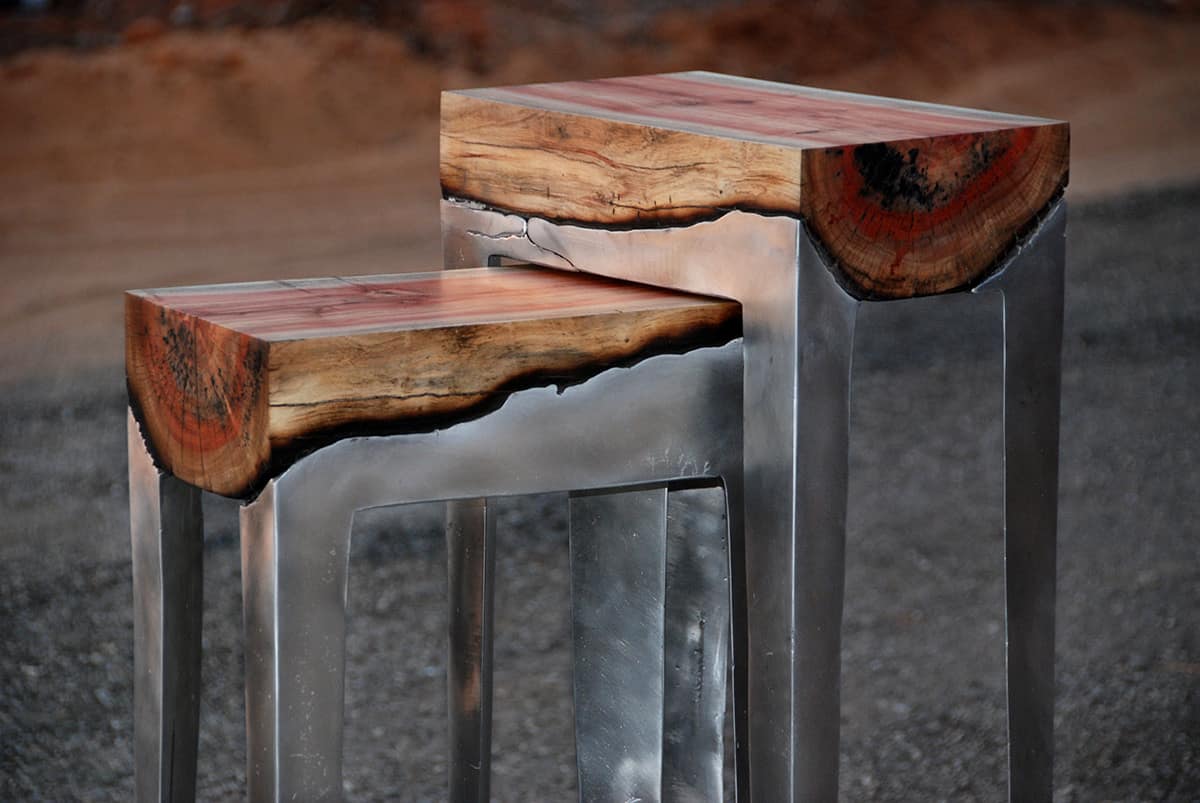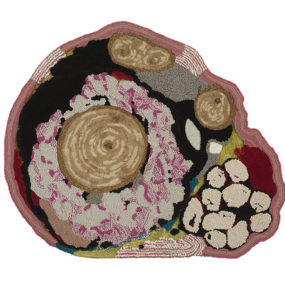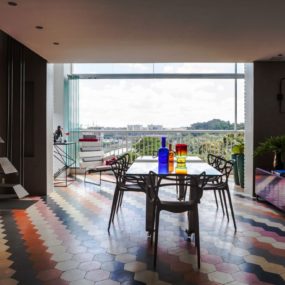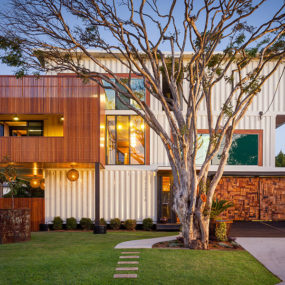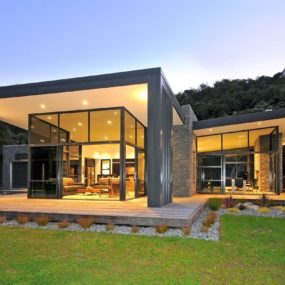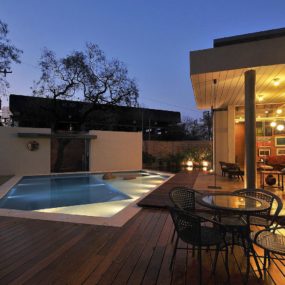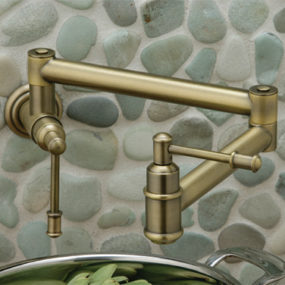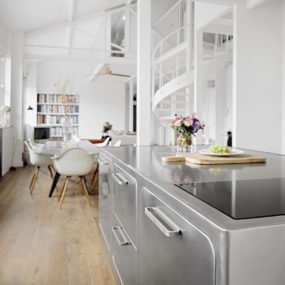Desert Canopy House is located in Palm Springs, California, on a site with stunning views of the St. Jacinto Mountain Range. For this reason, Sander Architects designed the home to include large expanses of glazings but since Palm Springs is subject to intense 120 degree Fahrenheit temperatures in the summer, they also designed the home with one large roof that covers 4 separate volumes with airy breezeways in-between to create a cooling factor. Aside from the views outside, the home was also designed to showcase unique and interesting architectural details and other artsy interior decor.
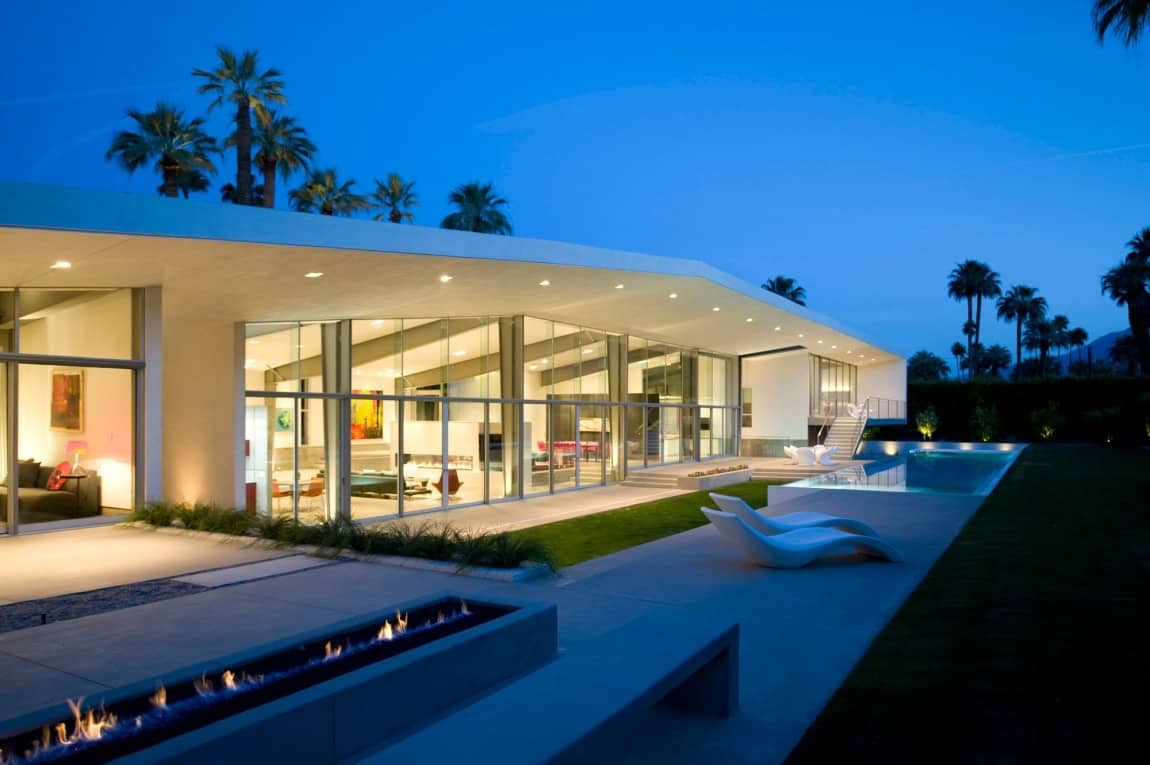
Aside from the covered breezeways, the roof also has a large 15 feet overhang to shade the glazed areas from the sun. The difference in size of the roof to the 4 interior pods is quite substantial with the roof covering 10,066 sqft and the 4 volumes covering 6,208 sqft.
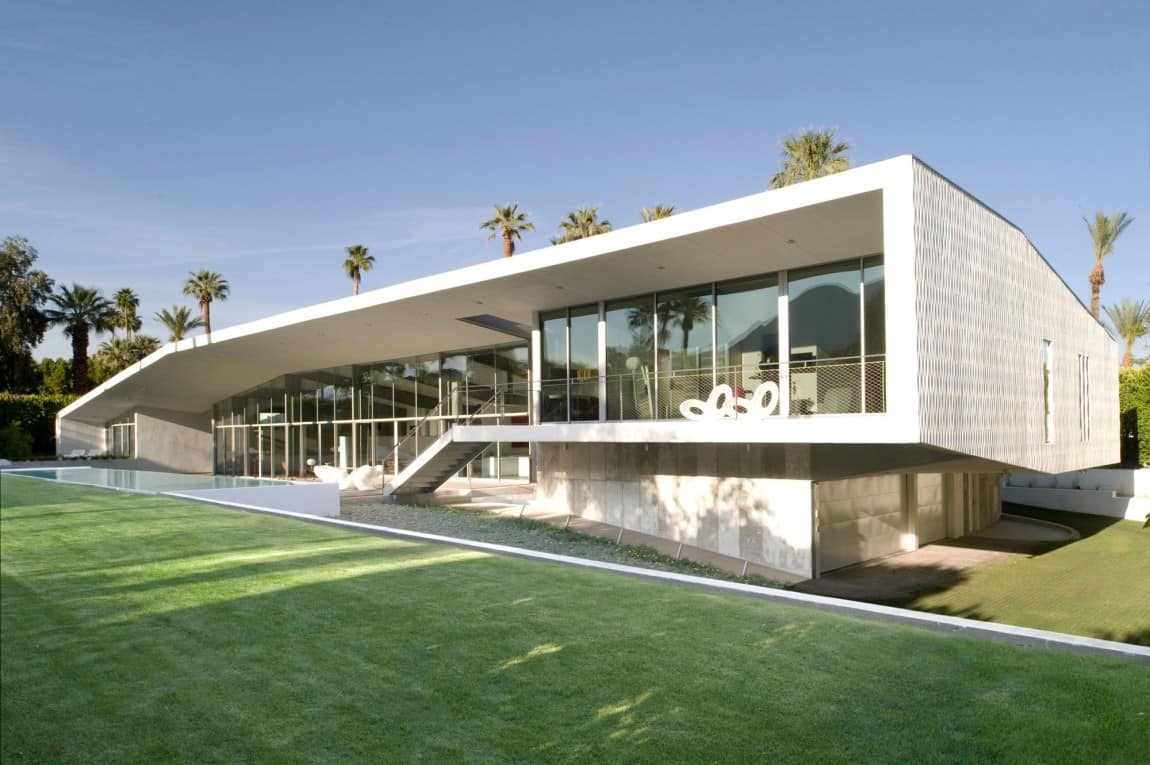
Aide from having a large overhang, the roof design is also created to meld and merge with the overall facade of Desert Canopy House, folding at an angle to become one of the side walls on one end and turning at right angles on the other before turning at right angles again to become the terrace and then angling down into the exterior stairwell – with almost the same angle as the roofline on the other side. The attention to detail when it comes to the facade angles is repeated on the unique shape to the sides of the home.
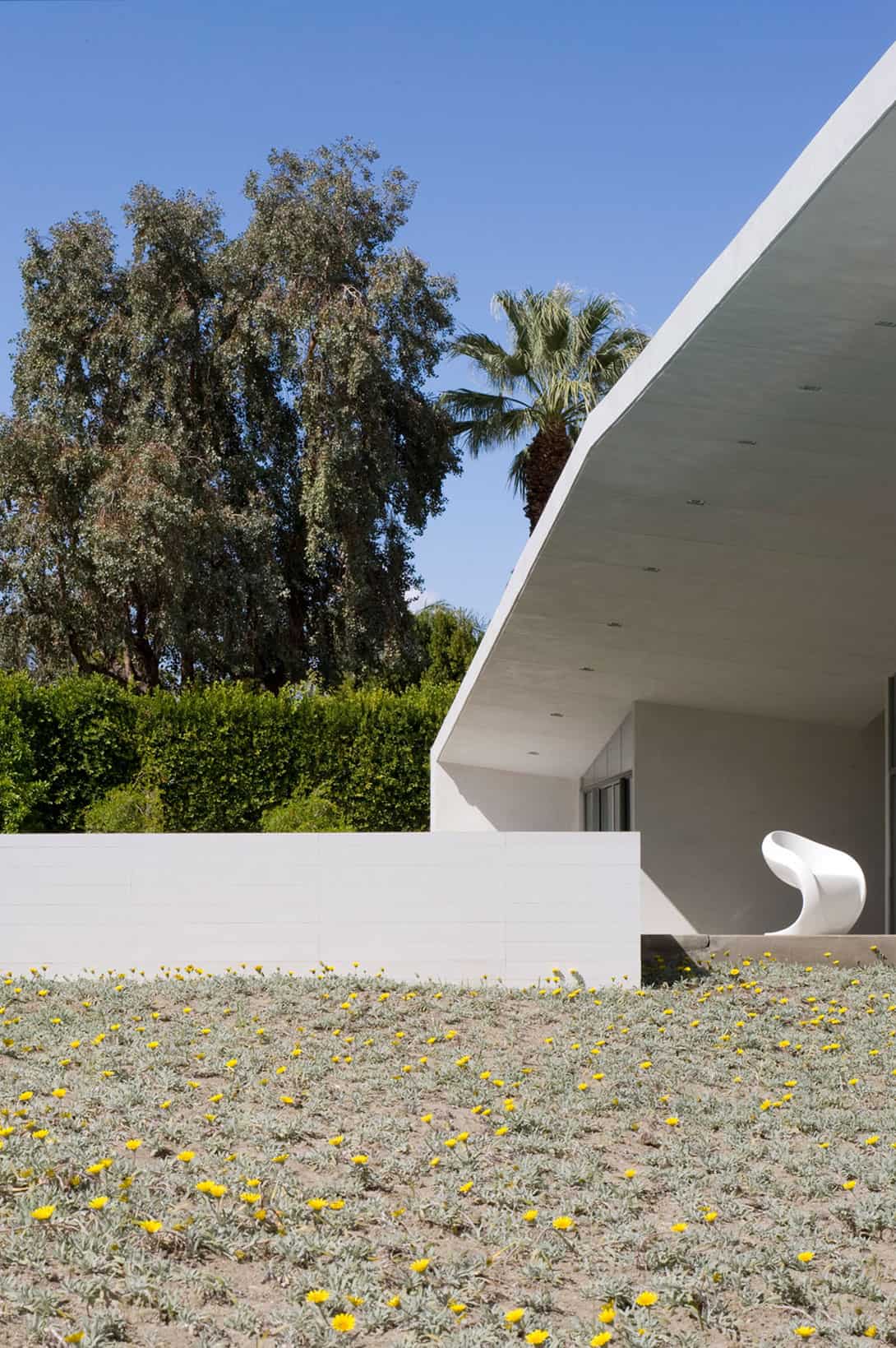
The roof is supported with a prefab metal structure and is enclosed using prefabricated panels that have a triple layer of insulation – Styrofoam, expanded Polystyrene and a high tech reflective foil and foam wrap similar that used in survival kit blankets. The R-value of all this insulation compensates reduces the need for the homeowners HVAC system and therefore reduces their utility bills.
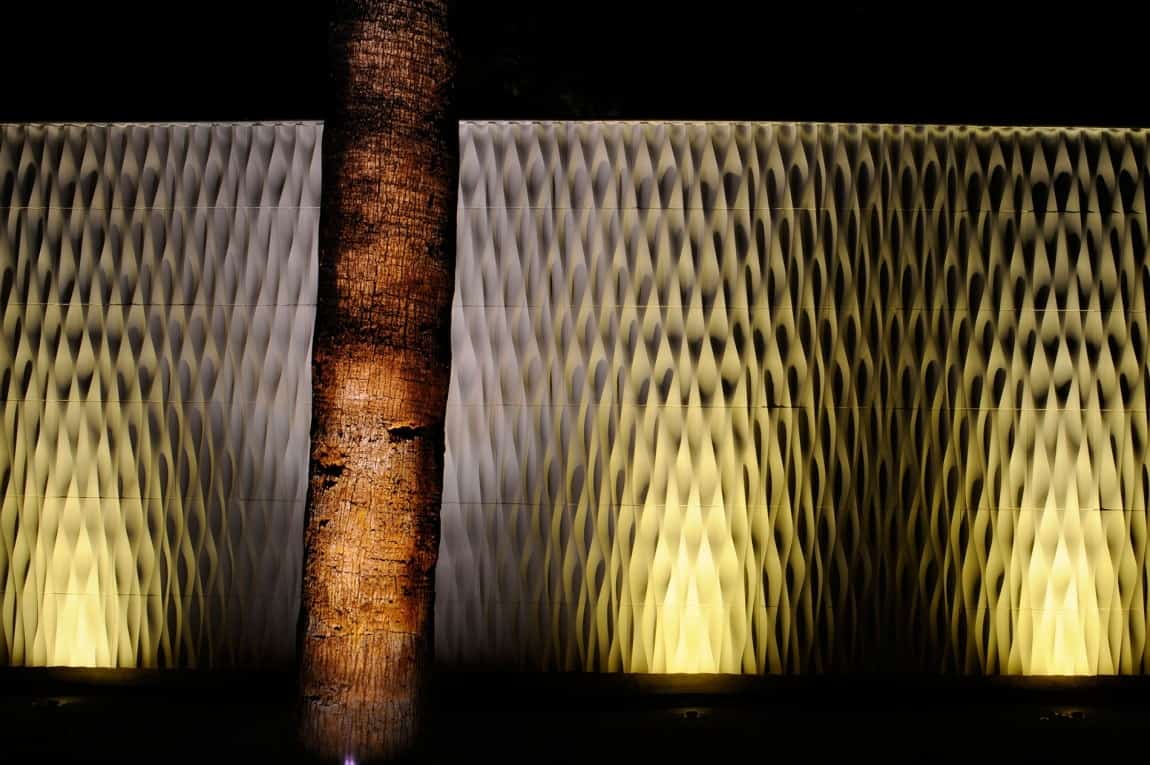
The facade of the building is designed to follow the same insulation qualities of armadillos and cacti, both which use a multi-layer system of shells to protect against extreme temperatures.
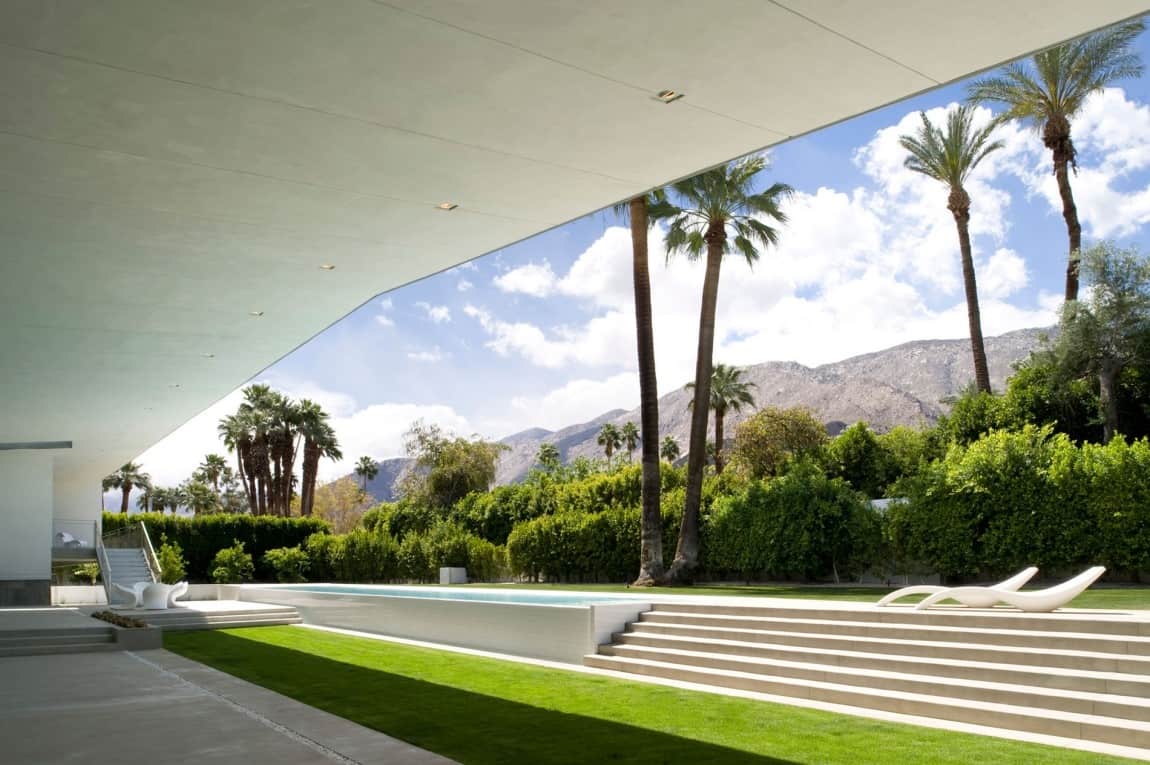
By building with prefabricated structural systems the cost of construction was substantially reduced leaving space in the budget to include more expensive finishes and custom designed details, allowing the home to present a unique and very artsy aesthetic.
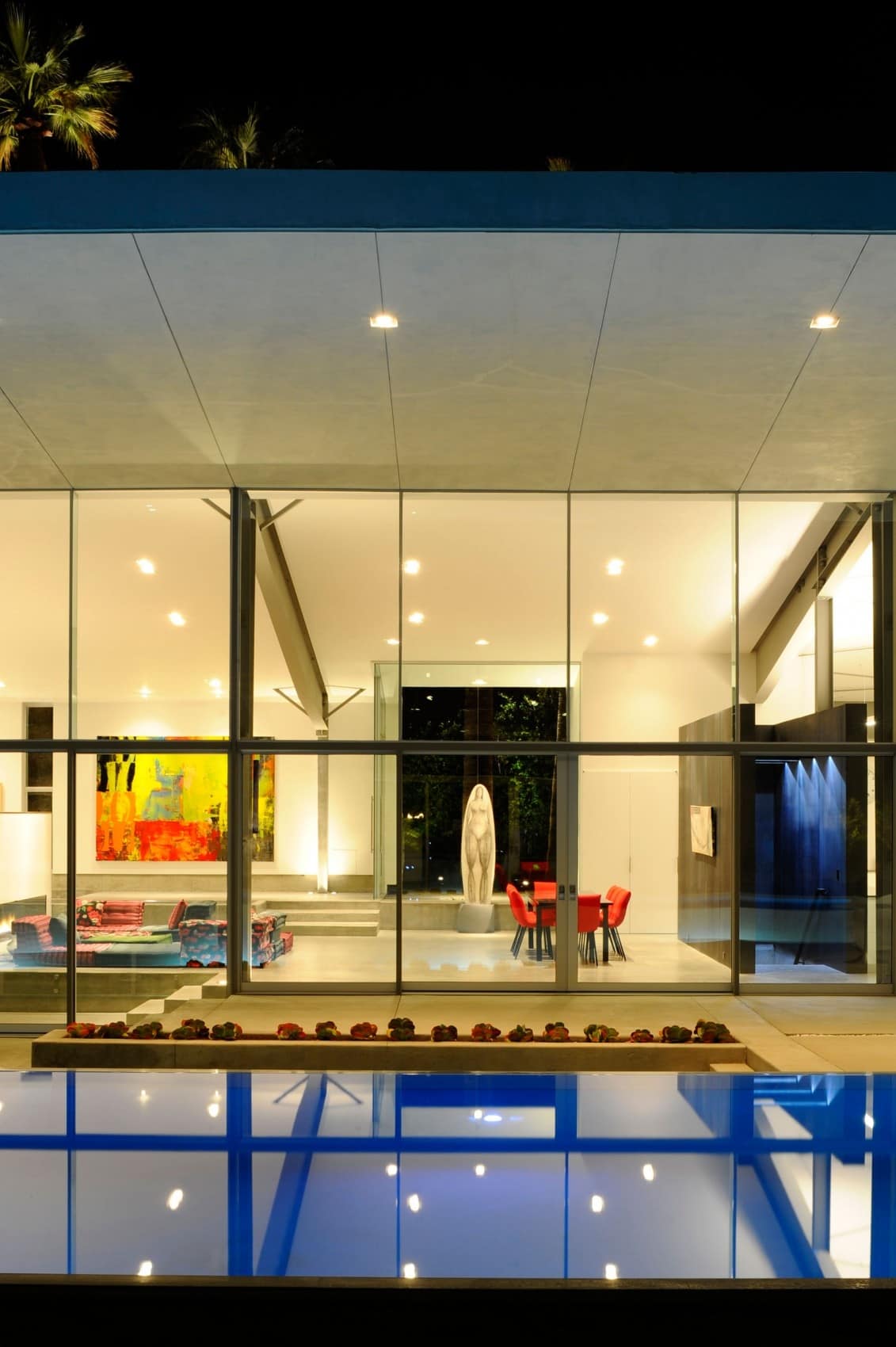
Some of the artsy details include actual art as well as creative furniture designs, all chosen in bold colors that pop even from a distance against the otherwise neutral backdrop of the walls.

The art and furnishings are not alone on the visual interest within the home. The architectural support system creates a dramatic geometric pattern as it repeats itself across the expanse of the social zone.
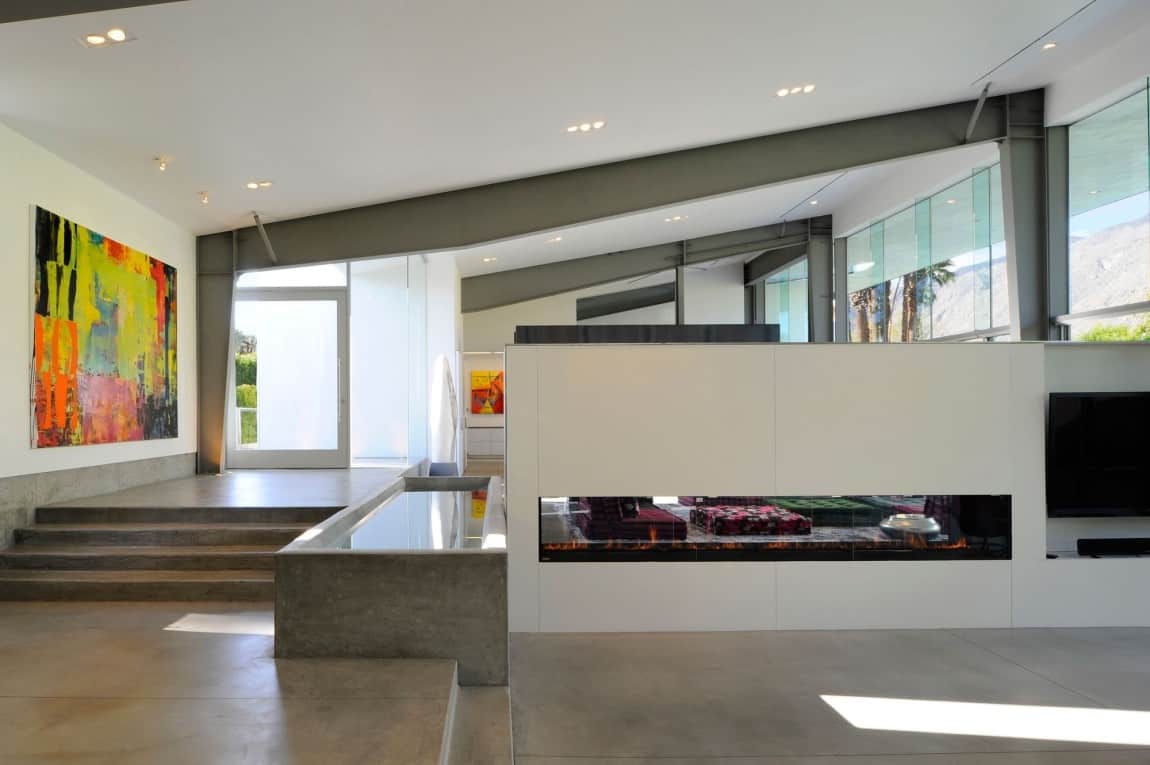
Beneath the steel post and beam structure a water feature and two sided linear fireplace make sure the floor level is as interesting as the ceiling zone.
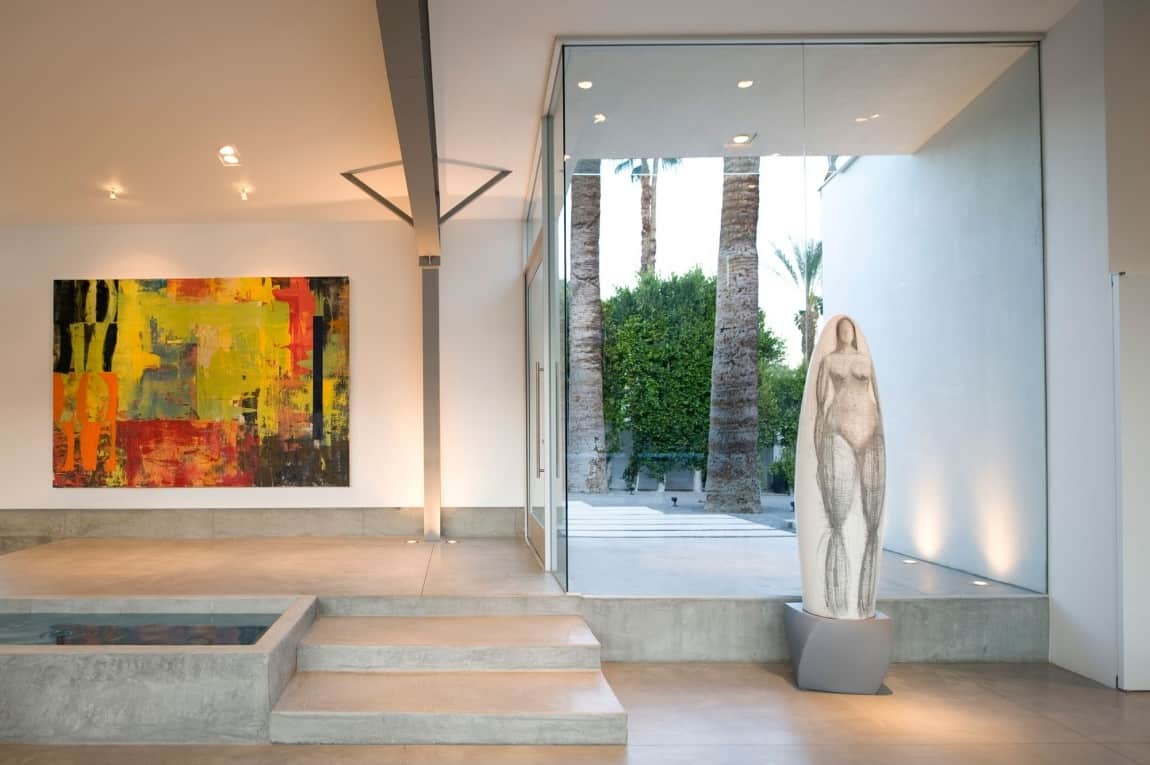
There is so much to look at and yet the art, furnishings and architectural details compliment each other so well the whole room reads as one single vignette.

One wall that is not white is a floating wall that separates the dining area from the kitchen.

The kitchen, while being part of an open plan layout is at the same time separated by the wall between it and the dining room.
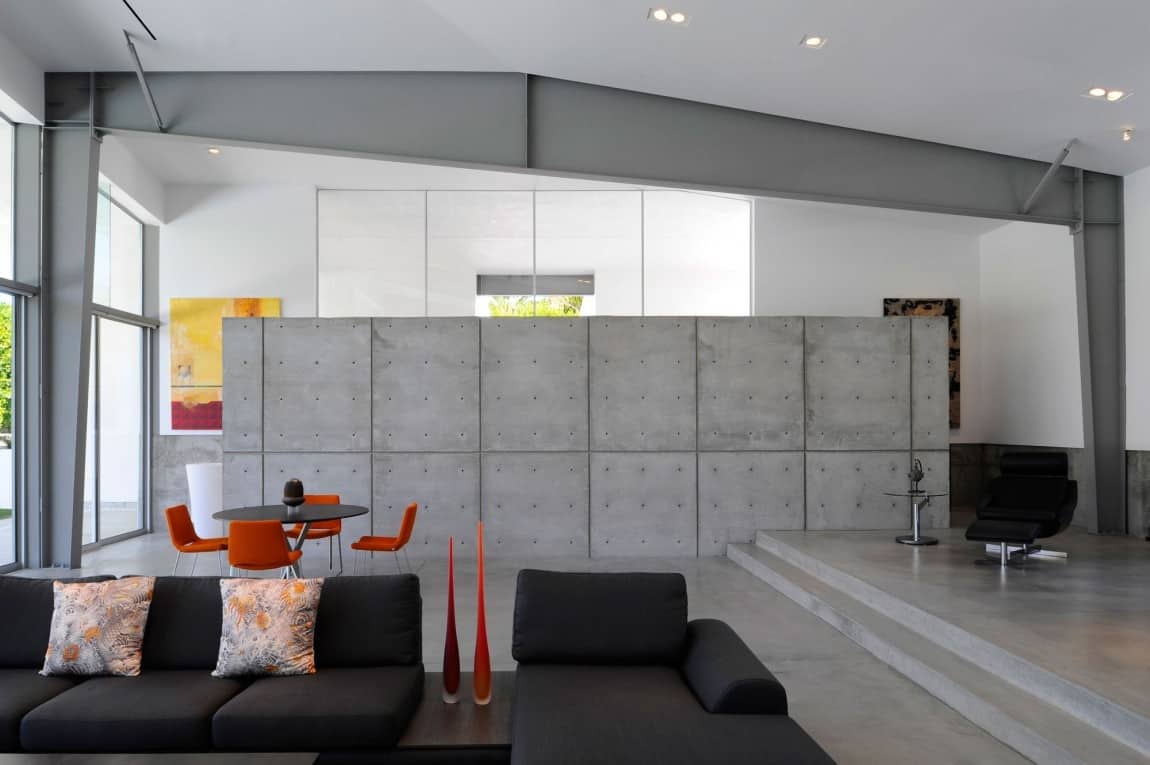
The living room, next to the dining area, also has a floating wall behind it. This wall showcases a natural concrete finish and supports the family room’s media center on its other side.
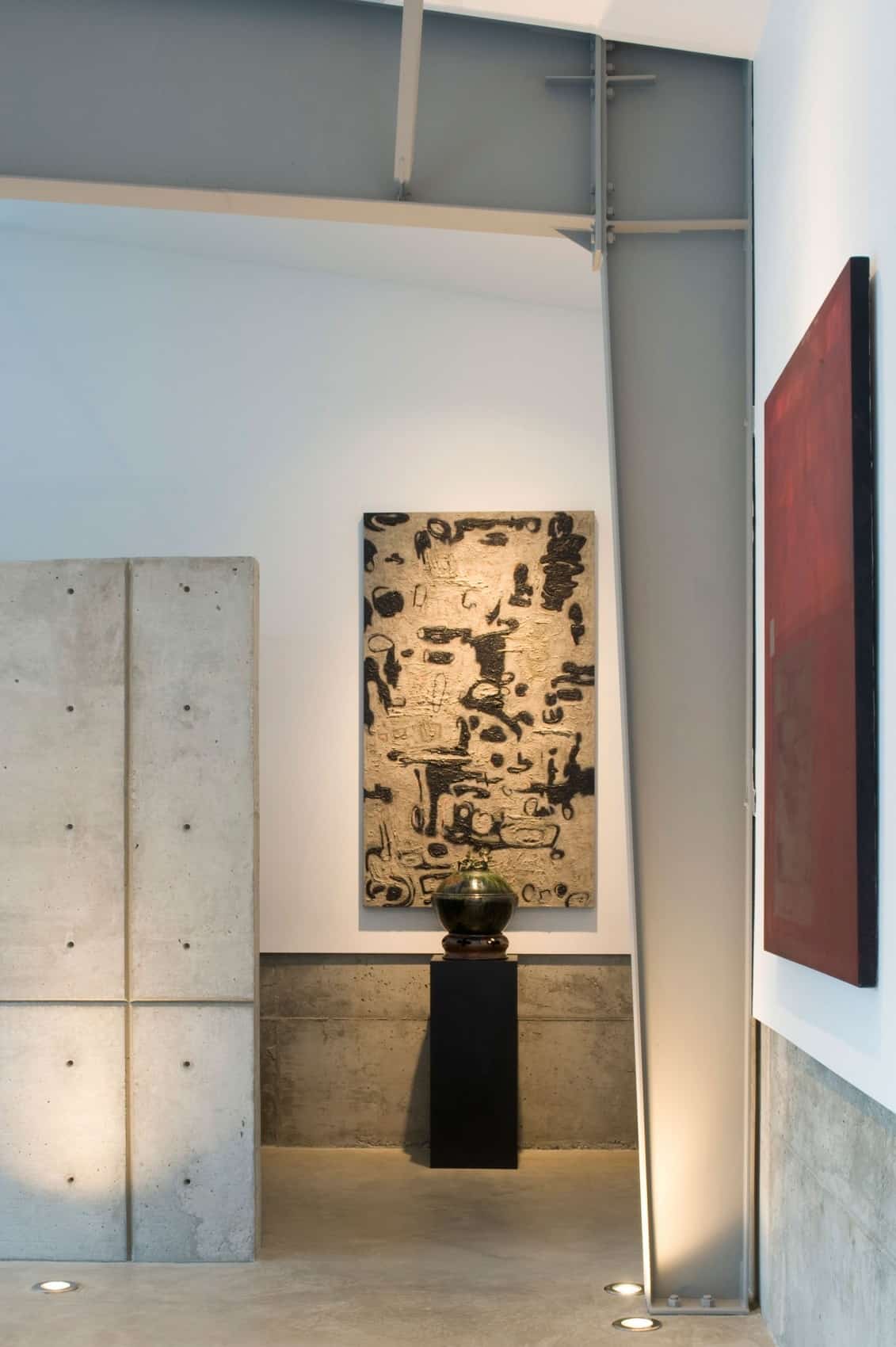
Even in the semi private family room an artsy vibe is maintained.

The social zone is contained in the central structure and on the south side a breezeway connects it to the master suite, complete with this amazing tub in its ensuite. The other two pods under the roofline are two guest suites, connected to each other and to the social volume by breezeways on the north side of the Desert Canopy House. These breezeways not only create air flow but they also create a sense of separation and privacy.
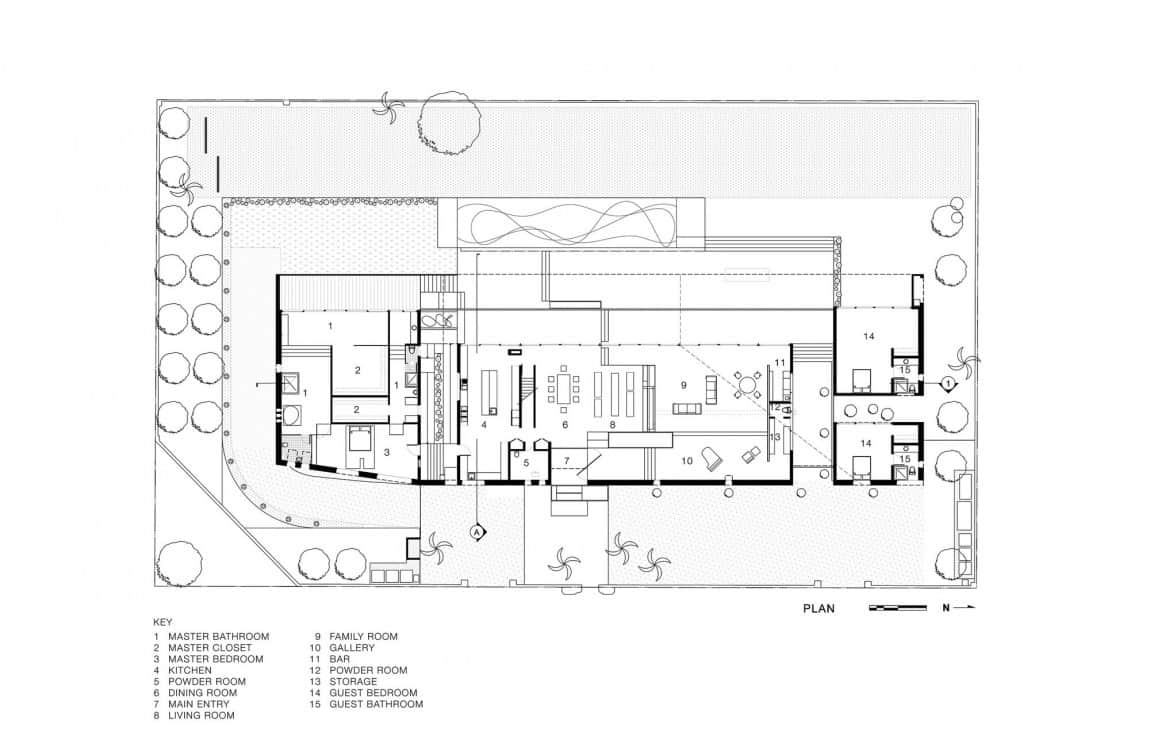

Sander Architects.
Photography by Sharon Risedorph Photography.
Large roof canopies are a great way to shade a home from the heat of the sun’s rays in the summer, and while Desert Canopy House uses its roofline to cover 4 distinct volumes, other designs use their roofline to cover a soft Z shaped home architecture, to create a large shady outdoor sitting area, or even to create a place to park a car.
